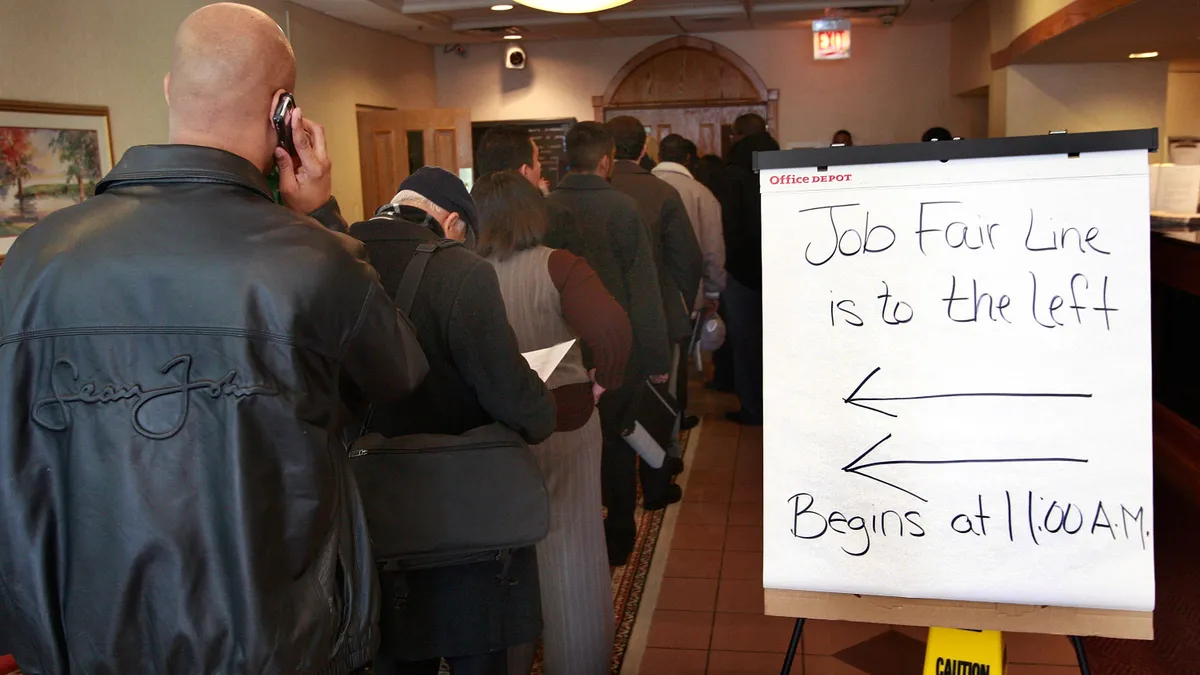Andrea Hough is head of Talent Management for Fidelity Investments. Views are the author's own.
One definition of "balance" might prompt today's multi-tasking professionals to chuckle: A state of equilibrium between contrasting, opposing or interacting elements.
Equilibrium? Not likely.
I've long thought the notion of work-life balance was a misnomer. The phrase — and what it implies — is too rigid for the flexibility that our lives require. Balance suggests some level of perfection, which is simply unrealistic when your 8 year old is late for soccer practice or your grad-school term paper is due in two hours.
In my view, we should abandon the notion of work-life balance and instead encourage work-life integration. As one's responsibilities and interests ebb and flow between work and the rest of life, his or her ability to deal with each task or initiative in the best manner should be allowed and encouraged by employers.
Competition for talent has never been more contentious — and flexibility is something employers must keep in mind as they strive to attract the best talent and avoid losing star employees to more progressive competitors. According to a 2018 survey, 61% of respondents said they have left or considered leaving a job because it lacked work flexibility; and 76% said they would be more loyal to their employers if they had flexible work options.
So, do you need to go to the dentist at 2 p.m.? Well, then go to the dentist and work an extra hour from home that evening if you need to catch up. Or is your daughter's orchestra concert at 9 a.m.? Come to work late — and tell us all about it.
The point is, we can't decouple life and work. It's one giant, amorphous "thing." We can't expect employees to leave parts of themselves at the door. The way we work is changing and it's prudent for employers to pivot with those changes. That means recognizing employees as the adults they are and creating a flexible environment that leaves 'how' employees get the job done up to them, when practical.
It sounds reasonable. But is your organization ready for work-life integration?
Here are some suggestions for creating a workplace culture that accepts and understands the rhythmic cadence of a 21st century lifestyle.
Start small
If your company is more traditional, and working from home is a completely new concept, don't just jump into the pool with a big splash. Tiptoe into the shallow end first. Perhaps you give employees the option of working from home every Friday. If that works, your company may be ready to allow more out-of-the-office options.
For individuals with a long commute, or who are raising youngsters, productivity will likely rise when alternative work arrangements are offered. In Owl Labs' 2019 State of Remote Work report, it was found that 79% of remote workers reported increased productivity as a main reason why they work from home. That same study concluded that remote workers work more than 40 hours per week 43% more often than on-site workers do. When the trip to work goes from being a one-hour drive in stop-and-go traffic to a 20-second walk downstairs to the study, the worker begins the day refreshed and potentially less-stressed.
If you aren't ready for fully remote work, start by incorporating employee choice into the office experience. Encourage movement around the office: a sofa near the breakroom; a standing desk; a bench near a quiet corner. Encouraging mobility, even within the office, can lead to higher levels of productivity and satisfaction.
Treat technology like gold
To enable remote work or the creation of virtual teams across multiple time zones, you must have the IT infrastructure in place to support productivity within a virtual environment. From document collaboration tools and videoconferencing to virtual private networks and state-of-the-art cybersecurity measures, you must create an online work environment that mirrors the in-office experience and allows employees to connect and ideate in real-time. Otherwise, you run the risk of employees feeling isolated, disengaged or unable to obtain critical feedback from their coworkers.
Set some ground rules
Offering employees more freedom to set their schedules and choose where and when they work doesn't mean they abandon their responsibilities. Insist on regular check-ins — via email, text or phone — to ensure assignments and deadlines don't fall through the cracks. You don't necessarily have to see them to know they are hard at work; but frequent updates will ease your mind and ensure nothing is misunderstood.
To that point, make sure that you and your employees are in agreement with respect to expectations — such as email response times and availability via messaging platforms. If you're treating your employees like adults, they must do the same and not take advantage of their freedom. Also, you may consider updating how and when you conduct performance reviews. Encourage 360-degree feedback from colleagues and co-workers, and have informal performance updates on a monthly, quarterly or as-needed basis.
Enabling employees to integrate their separate lives and find their own work-life rhythm isn't just beneficial to them. It can positively impact the business as a whole, too. A Stanford study found that one organization determined its work-from-home employees were $2,000 more profitable.
Happy employees are more loyal employees, too, and in a full-employment economy, the competition for talent can be fierce. The more accommodating you can be, the better your workers will perform. And the more likely they will be to stay.


















